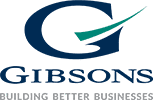Most of Gibsons clients with people issues needed a strategic review. Do you?
Did you know that most clients who come to us with people issues discover in our strategic review process that the core of their problem is driven by poor strategy? Inadequate management structures, deficits in skill areas and a team that just isn’t performing or aligned with business objectives; is poor strategy driving people issues.
It’s not just a lack of strategy that can be a problem. It can also be an inappropriate one; or you may have the right strategy, but it is being poorly implemented. We address all of this.
As consultants, we encounter many businesses who have developed unique products or services that often have the potential to fill a need in the marketplace. There is no shortage of innovative ideas developed by highly talented people within Australia’s small to medium enterprises today. However, while businesses exhibit technical brilliance with seemingly great products and services accompanied with operational capability, they still often struggle to deliver successful business outcomes. Often, it simply comes down to strategy, or rather that there isn’t one, or a suitable one, in place.
The importance of a well thought through plan, that is supported by an appropriate management structure, aligned with corporate objectives and an overarching vision of ‘where we are going’ can never be underestimated. People simply work better when they have a clear view of what’s expected of them and where they fit within an organisation. A structure to support appropriate performance, mentorship, training, and retention is paramount.
Gibsons was engaged to support a mid-sized professional services company that was performing badly in terms of profitability. Despite a good reputation in the marketplace and a loyal customer base, the company had been experiencing poor financial results for several years. Before Gibsons’ involvement, the company had implemented several tactics to mitigate losses through cost cutting measures and operational streamlining.
We conducted a complete strategy and business review to fully understand the issues and to develop and implement strategies to address their performance situation. It became clear that the company had an inadequate management structure with poor management practices in place. This was accompanied by the absence of an effective human resource process, skill shortages at all levels within the business, and little review of business performance.
A strategy was developed and implemented to address these human resource issues, which were underpinning the poor financial performance being experienced by the company. Strategic and business review processes were established, along with the development of an effective management team, and a revised organisational structure. Comprehensive training and mentoring programs across supervisory and management levels were initiated. Human resource processes to support employee engagement and business alignment were enabled.
By determining and implementing the right solutions to correct key performance issues, a business has the capacity to overturn poor financial performance.
The result – staff engagement was greatly improved, and productivity levels increased across the business. There was a significant upturn in profitability levels which has been sustained in the medium term. While the business saw cost containment as a strategy to improve its financial performance, a robust strategic process allowed the business to understand the real issues it was facing. It was able to move from a strategy focused on cost cutting, to put into motion a robust and relevant human resources strategy.
Strategy is at the heart of all smart business decisions. Without it, a business is essentially operating in the dark. Find out more about the Gibsons strategic review process and how it can benefit your business.
